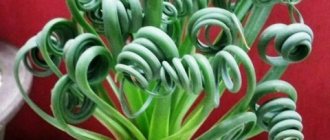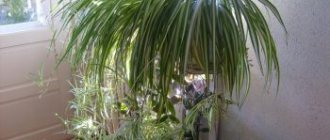If you want to find out how to properly grow coleus from seeds at home and what you need for this, then read the article. We will tell you all the details. First, a few words about the plant itself.
Coleus is often called the ideal flower for the garden: it is hardy, unpretentious, easy to care for and at the same time very decorative. By combining a variety of varieties with different leaf colors, you can create magnificent flower beds or borders that you can’t take your eyes off.
Description
In nature, coleus has about 60 varieties. The ancestor of all cultivated varieties was the Blume species. Popularly, the herbaceous plant is also called “nettle” due to the similarity of the leaves to nettles. Breeders have developed many hybrids that are distinguished by a variety of foliage colors and patterns on it in the form of spots and stripes. The most decorative varieties are especially common among gardeners:
- Rainbow;
- Fun;
- Fantasy;
- Black dragon;
- Dark chocolate.
There is "Dog Coleus" - a variety with an unpleasant aroma that discourages pets from encroaching on the plant. The varieties Jade, Faust, and Watermelon will surprise even experienced flower growers with their unusual shades.
The flower grows from 35 to 50 cm in height. The ribbed stems become lignified near the ground, but at the ends they are soft and almost transparent. The foliage is velvety, with serrated edges, and varies in size depending on the species. The flowers are small and inconspicuous, and the bright leaves are colored in shades of green, purple, white, burgundy, yellow, and brown.
Timing of sowing seeds
Early spring is the best time to sow seeds for seedlings. The best time to do this is in March. Seeds from Dutch and English breeders can be sown indoors at any time of the year, but to grow a full-fledged beautiful flower you will need additional lighting on short winter days.
In regions with a warm and mild climate, the end of February and the beginning of March is the ideal time to sow coleus. Seedlings are planted in a permanent place in the garden in early May, when night temperatures do not drop below +15°C.
In the temperate climate of central Russia, sowing is carried out in mid-March. They are planted on the site in the second half of May, when there is no longer a threat of spring frosts.
In areas with a cold and changeable climate, coleus is sown in the second ten days of March. Seedlings are planted in open ground at the end of May, when warm weather sets in.
Choosing a variety for planting
There are so many types that choosing one can sometimes be difficult. The following varieties are often grown:
- Freckles – having a gorgeous vibrant variety of foliage. The leaves are yellow, almost completely covered with orange spots.
- Wizard Velvet Red - this series has become extremely popular recently.
- Collins Gold - this species is attractive because it has elongated, corrugated leaves with deep teeth along the edges. A narrow green stripe runs through the center of each yellow leaf blade.
At home, nettles can be grown either with seeds or with cuttings. The second method is not particularly difficult. Mature sprouts have their tops cut off and left with a few leaves. The shoots are placed in a glass of water or covered with a damp mixture consisting of sand and sphagnum.
After about 7-10 days, the cuttings will have roots, which means they can be planted in the soil. Also, the more often you pinch the vertices, the larger it will be. It is recommended to sow seedlings at home in early spring, when the days become longer.
Capacity requirements
Wooden boxes are the most suitable container for sowing seeds. Moreover, the sides do not have to be high - 8-10 cm is enough. The wider the width, the better.
Plastic containers have similar parameters. A prerequisite is the presence of holes in the bottom to drain excess moisture. A drainage layer is laid under the soil. The soil itself is not compacted or compressed. The distance from the ground surface to the edge of the side should not exceed 2 cm.
Containers, soil
Important! Holes in the tray are a must, as retained water in the soil will create an unsuitable environment for seedlings.
It is recommended to create additional drainage by placing small expanded clay or pebbles on the bottom of the container to a height of 1 cm.
Another soil option: prepare soil from the garden, sand, and ready-made soil for growing seedlings in advance. The prepared three components are mixed in equal parts, the resulting mixture, without crushing, is transferred to a tray. Level, spray.
Pre-planting seed preparation
A prerequisite for obtaining strong seedlings is seed disinfection. Planting material is disinfected as follows:
- Add a few crystals of potassium permanganate to a container of warm water until the liquid turns light pink.
- Pour the seeds into the water, making sure that they are submerged evenly.
- Leave for 15 minutes.
- Drain the water.
- The seeds are dried on a piece of cloth until they begin to separate well from each other.
The germination rate of coleus is about 50%.
Conditions for seed germination
The greenhouse atmosphere created by the efforts of the gardener will reduce the time for the first shoots to appear. The quality of the seed also affects the timing of germination.
Lighting and location
The length of daylight hours does not matter until the seeds have sprouted. At this stage, it is more important to ensure an even temperature without sudden changes.
A good place for seedlings is a windowsill that is illuminated by diffused light. The corner of a table located by the window is also a suitable option.
Temperature
In the room where the containers with planted coleus are located, maintain a temperature of at least +22°C, +25°C. The first shoots will appear within a week if the seeds are good. If after two weeks of waiting nothing has hatched, you should not wait for germination - it means that the planting technology was violated or the seeds were bad.
Air and humidity
Mandatory daily ventilation will avoid waterlogging and provide oxygen to the seeds. To do this, the film or glass is opened for a few minutes. The air in a city apartment, dried out by radiators, is moistened by periodically spraying water next to the boxes.
Watering
It is necessary to moisten the soil as the surface layer dries. This is done only with a spray bottle, very carefully. You need to spray water a little at a time so that drips do not wash the seeds deep into the ground. Too much liquid pressure can knock the seeds into heaps or cover them with soil, preventing them from germinating.
How to grow coleus from cuttings
Coleus cuttings photo
- The cuttings are cut small, approximately 10-12 cm.
- Remove the leaves from the bottom, stick the cutting into moist soil or sand, cover with film or a cap from a cut plastic bottle, place in the shade and maintain the temperature at 18-20ºC.
- After 8-10 days, roots will appear, and when the first shoots appear, you can transplant the seedling into a permanent pot.
- You can simply root in water, and when roots appear, plant them in pots.
This type of propagation is simple and reliable, allowing you to quickly get strong new plants.
Seedling care
When sprouts appear from about 50% of the seeds, remove the film or glass from the containers. Small sprouts are actively developing, and if the conditions are suitable, the seedlings will turn out strong and strong.
Temperature
To prevent plants from slowing down their growth rate, the temperature regime is maintained from +21°C to +23°C. Changes and sudden jumps should not be allowed; coleus reacts by weakening the immune system when it gets cold, and in the heat it becomes very stretched and frail.
Backlight
After the seeds have hatched, the plant needs good lighting. Seedlings need bright, but not burning light for at least 15 hours a day. This is why additional sources are used when the day is short. Sunlight should be intense, but diffused, not hot.
Watering
Water the seedlings carefully, spraying water from a spray bottle. Young coleus have weak roots; strong pressure can wash the plant out of the ground along with the root system. You cannot over-wet the soil - only a dry surface serves as a signal that watering is needed. Stagnation of water provokes the appearance of “black leg” and other infections.
Picking
Picking is carried out 3-4 weeks after emergence. As soon as the leaves of small coleus begin to come into close contact with each other, they need to be planted in separate containers, giving space to the root system.
Diving is carried out with a narrow (no more than 3 cm in width) spatula with a long pointed tip. This tool allows you to carefully pry up the seedlings without damaging the roots and neighboring sprouts. At the same time, they try not to shake off the lumps of earth from the roots, replanting with them.
The cups are prepared in advance - filled with soil and watered. The soil is the same as for sowing seeds.
Top dressing
Wood ash, ground into powder, scatters over the surface already in the first days after the sprouts appear. This is not only plant fertilization, but also disease prevention. 2 weeks after picking, the first feeding with minerals is carried out. Small seedlings are fertilized with complex additives, making the solution weaker than indicated in the instructions. Uniflor (1 ml per 1 liter of water), Fertika Lux (15 g per 1 sq. m.), Zdraven (5 g per 10 liters of water) will help with active growth.
Pinching
To ensure that the flower grows a lush leafy mass, and does not stretch into height as a skinny bush, the crown is pinched. The procedure is carried out for the first time after 2 months from the date of germination, when the seedling reaches a height of at least 10 cm.
Using the nails of the index and thumb, pinch off the upper part of the stem. At the same time, the side shoots begin to develop more intensively, forming a voluminous crown.
Growing in peat tablets
Peat tablets are first filled with warm water so that they swell. After draining the unnecessary liquid, the seeds are placed on the surface one by one. Keep a distance of at least 2 cm from each other.
The tray with tablets is covered with film. Moistening is carried out as it dries. To do this, use a pharmaceutical pipette - 2-3 portions of water from it are enough for watering, and the seeds will not be washed away by the liquid.
The seeds are ventilated daily, lifting the film. When the seeds hatch, the ventilation time is gradually increased, hardening the seedlings. To moisturize, pour water into a tray with tablets every 3-4 days, the required amount is absorbed by peat.
Grown seedlings are transplanted into separate containers when they become crowded. To do this, the retina is carefully cut with scissors. Small coleus are removed, being careful not to damage the roots, and planted in cups with soil.
Diseases and pests
Coleus is quite unpretentious and rarely gets sick. But to prevent “black leg,” an infection destructive to seedlings, the following measures are taken:
- Before planting, the soil is spilled with boiling water or a weak solution of potassium permanganate;
- at the first signs of infection, water with a fungicide solution, removing all affected seedlings;
- provide good ventilation in the room;
- do not over-moisten the soil, watering when the top layer of soil is completely dry.
Among the preparations used are Fundazol (5 g per 10 liters of water), Previkur (3 ml per 2 liters of water), Profit Gold (0.5-1 g per 1 liter of water).
Direct rays of the sun lead to burns on coleus leaves and discoloration of the leaves. If the air is too dry, brown spots appear on the foliage - in hot weather, this sign means that the plant needs regular spraying.
Among the pests you should be wary of are aphids, whiteflies, and spider mites. The fight against parasites gives results if carried out correctly:
- Isolate the box with infected seedlings from others.
- Remove damaged leaves and destroy them.
- If you give your seedlings a warm shower, you can do it with a soapy solution.
- Thin out too many plantings.
- Treat with insecticides if previous measures did not help. They use Aktara, Confidor, Akarin, Iskra.
Further care
In order for coleus to please the eye with lush, bright foliage, you need to choose the right place for planting in the garden or placing a pot - with good lighting, but without intense sunlight. Regular watering and pinching will allow you to grow bushes that will become a real decoration of your site or home.
Watering
The plant easily tolerates a slight drought, but a constant lack of moisture affects its development and appearance - coleus grows poorly, and the leaves look lethargic and faded. It should be remembered that waterlogging is worse for nettles than dry soil - excess water leads to rotting of the roots and death of the entire plant.
The need for watering is checked by pressing a finger on the surface of the soil. If your finger remains dry even after intense pressure, you need to water the plants. If moisture is felt under the top layer of soil, moisturizing is not yet required.
The leaves should not be wiped as this will damage the leaves and cause them to die. Spraying is a desirable procedure, and in the hot dry season it is necessary to spray the plant.
It is better to use settled water at room temperature. For garden plantings, you can collect rainwater.
The period of active growth for coleus practically never ends. The flower grows luxuriantly in winter, in warm rooms, so the intensity of soil moisture does not decrease. If the room temperature drops to +10 in winter, watering is halved, since growth stops.
Top dressing
Nettle is a fast-growing crop, so it needs constant feeding. After planting in a permanent place, the coleus is fertilized every week. At the beginning of summer, complexes with nitrogen are used to increase the growth of leaf mass. Bio Master (5 ml per 10 liters of water) is suitable.
Throughout the season, use Aquarin (2.5 g per 1 liter of water), Magic Watering Can (10 ml per 5 liters of water). In winter, indoor flowers are fertilized less often, once a month.
Loosening
It is necessary to ensure access of oxygen to the roots by loosening the top layer of soil, which is carried out after each watering. In the garden plot, the procedure is combined with the removal of weeds and debris. Mulching open ground with humus will help prevent intense evaporation of moisture in the heat and ensure the supply of useful substances to the soil.
Pinching
Be sure to carry out the procedure if you want to grow a compact, lush bush with voluminous, dense foliage. The central trunk is pinched at a height of 10-15 cm. Then, regularly, throughout the warm season, the tops of the side shoots are pinched off if their length is more than 4 cm. The crown is formed as desired.
Be sure to remove the panicles of the inflorescences so that the plant does not waste energy on flowering. You can prevent the appearance of flowers by pinching off emerging young shoots with flower stalks. To renew the nettle in February, the indoor flower is cut to a stump, leaving only 5-6 growth points on the trunk.
Transfer
The pots of coleus plants that grow in the house need to be changed as the bush grows. This is done by transshipment every 2-3 years. Buy a container larger in volume than the one in which the flower grew. Signs of the need for a transplant:
- cessation of growth;
- crushing leaves;
- faded color;
- Potted soil that dries out too quickly.
Plants in the garden need to be replanted if the plantings are too thick and the bushes interfere with each other and their care. When the distance between plants is less than 30 cm, they are carefully dug up with a lump of earth and transplanted to another place.
Growing coleus from seeds in open ground
It is possible to grow coleus on a plot by planting seeds in open ground only in the mild climate of the southern regions. In central Russia there is not enough time in the warm season for flowers to grow into full-fledged plants.
In areas with warm winters and early spring, seeds are laid out in beds evenly over the ground in late March-early April, without deepening them. Cover with film for 1-2 weeks, maintaining the temperature at least +22°C. At first, moisten the soil with a spray bottle. Young plants are planted after 1-1.5 months, in a permanent place, in flower beds.
Possible problems during cultivation
Attention! The plant reacts very sensitively to light and heat. Therefore, the absence or insufficient quantity of these components will negatively affect cultivation.
If there is not enough light, the plants will stretch out. The trunk and leaves will be thin and weak. If there is a lack of heat, coleus grows slowly, the leaves may not be juicy and bright.
To strengthen the seedlings, it is necessary to feed them. A complex fertilizer is best suited for this purpose; only reduce the dosage by three times (see instructions on the package). Before applying fertilizer, water the soil well.
If a flower pleases your home with its color, water it less often in winter so that the root system does not deteriorate. In this case, feeding is carried out once a month.
Adviсe
Leaves falling off and their color becoming pale occurs due to lack of nutrition. It is enough to water it with a solution of complex fertilizer and the flower will again acquire a decorative, attractive appearance.
Softened leaves and stems that have lost their elasticity indicate waterlogging of the soil. In this case, drainage is added under the soil layer, and looser bulk elements are added to the soil composition: sand, humus, peat.
A plant severely affected by disease or parasites can be saved by cutting off the most surviving shoots. The cuttings quickly send out roots in water and take root easily, developing intensively after transplanting into the soil.











